|
During these tough economic times, we wanted to let our members know that the Washington Area Chamber of Commerce and the City of Washington are working closely together to get you the most up to date information regarding COVID-19 help. Between the two organizations, we receive information from the Missouri Chamber, St. Louis Regional Chamber, and Missouri Department of Economic Development. In an effort to keep from sending you the same information multiple times, we are collecting everything and sending it in one email. These organizations also forward us any webinars or conference calls that they are hosting. If they are open to our membership, we will forward them on to you and you are welcome to join. Tomorrow the St. Louis Regional Chamber is hosting a weekly policy briefing webinar that will be available to the public. You can register for tomorrow’s 10:00 a.m. webinar here> https://zoom.us/meeting/register/tJQoduysqz0rQ42T6OjQkmgHgHtHGPHv1Q After you have registered once, you will continue to receive information about future meetings. Last week’s proved to be very informative for us and we think it could be beneficial to many businesses. Currently, we are working on putting together some upcoming conference calls for our members so please be looking for that soon. We are also working on adding a new tab (Coronavirus Resources) to our website where you will be able to find updated information on COVID-19 relief. - https://www.washmochamber.org/ Below is a summary of programs available so far that could be helpful.. Layoff Program Resources. If your business is going to be forced to do some lay-offs from the crisis, we encourage you to connect with the Department of Labor to review options prior to making any announcements within your company. 1. WorkShare Program – allows you to cut hours of employees rather than lay them off. Supplements their decrease in wages with partial unemployment. - https://labor.mo.gov/shared-work 2. Mass Claims Program – allows you to register laid off employees for a mass claim of unemployment benefits for a period of up to 8 weeks as long as you certify to bring employees back after the crisis. Allows employees to collect benefits without having to look for work. – https://labor.mo.gov/mass-claims Small Business Association Loans – With the declaration of emergency, the SBA is now qualified to issue low interest loans to small businesses (Small Business definitions vary per sector, typically 500 employees and under). This allows businesses to request loans up to $2 million at 3.25% rate and extended pay back periods. We have been advised to apply online for these during off-peak hours in the evening or early in the morning due to the increase in traffic on the site. They can be applied for at https://covid19relief.sba.gov/#/ CARES Act – The Federal Government passed the CARES acts on Friday, March 27th. There are a number of programs included to help individuals and businesses. This does include a Small Business loan called the Payroll Protection Program. This allows companies to apply for potentially forgivable loans to fund up to 2.5 months of payroll and operating expenses. Businesses will have to certify that they will maintain existing payroll to qualify for loan forgiveness. These will be applied for through your normal lender so you will want to contact them. However, as of Monday, March 30, we were told not to expect them to be available for another 2 weeks. Attached to this email are summaries for the new loan program and the CARES Act significance to businesses. You can find more information on the CARES Act and the Family Protection Act on the Chamber website under Coronavirus Resources. We will continue to update you as we learn information about additional programs. You are all important to us and we want to help in any way that we can. We hope everyone is staying safe and healthy. Please reach out to us if you have any questions or concerns. Thanks!
Please see below for the status of upcoming Chamber Events (as of 3-17-2020). Events currently set to continue as scheduled may change, depending on new developments and recommendations. Any updates will be communicated to members and local media, and will be available on the Chamber website (washmochamber.org) as well.
Chamber Banquet – March 21 Postponed. Updates will be provided as available. Education Series – March 31 Postponed. Updates will be provided as available. Washington Farmers’ Market Opening – April 4 Tentatively re-scheduled for May 2. Job Fair (with City of Washington) – April 22 Cancelled Education Series – April 28 Postponed. Updates will be provided as available. Chamber Golf Tournament – May 8 Will continue as scheduled. Music at the Market – May 14 Will continue as scheduled. Education Series – May 19 Will continue as scheduled. 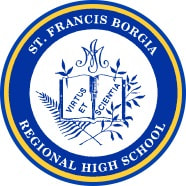 Saint Francis Borgia Regional High School is a Catholic, coeducational college preparatory high school in Washington, Missouri, located in Franklin County about 50 miles southwest of St. Louis. Students come from as many as 25 public and private elementary schools. The geographic region served is centered in Franklin County and ranges from St. Louis County to the east, Gasconade County to the west, Crawford County to the south, and Warren and St. Charles counties to the north, representing 26 zip codes. The administration, board, faculty, parents, students, and benefactors of Saint Francis Borgia Regional High School cooperate to foster a Christian atmosphere based on mutual respect. We value the uniqueness, dignity, integrity, and individual goals of each person. We work together for personal spiritual growth and for growth as a vibrant Catholic faith community. Spirituality is at the core of life at Borgia. We offer students many opportunities to learn and live the Catholic faith. In addition to a four-year theology curriculum, students can deepen their relationships with God through weekly Masses, retreats and prayer days, service opportunities, and more.  Through a college preparatory curriculum, we strive to foster academic excellence that recognizes individual differences, maximizes personal growth, and prepares students for a variety of post-secondary opportunities. A rich core curriculum is complemented with dynamic electives. We offer a STEM (Science, Technology, Engineering & Mathematics) Lab, a television studio with a live morning broadcast, a state of the art Theater program, and an award winning music program which includes the only marching band in the archdiocese. We also have a Mac Lab offering 20 Apple computers that are equipped with the same software professional’s use for design, photo editing, and video production. Teachers incorporate twenty-first century resources into coursework through our 1:1 iPad program.  Every student is unique. Our programs are designed to meet individual needs and different levels of academic ability. A full time Learning Consultant provides assistance to students with mild or moderate learning needs. The resource room provides instruction for student skills in time management, organizational and study skills, and research and test taking skills. Technical courses are offered through a partnership agreement with Four Rivers Career Center. Eighty-one hours of college credit are available through a variety of courses offered through St. Louis University, University of Missouri-St. Louis, Missouri S & T, and East Central College. These courses, as well as Advanced Placement® (AP®) courses, ensure Borgia students graduate well-prepared for college. In addition to a rigorous academic program, students have the opportunity to participate in a wide variety of sports and club activities. Borgia is home to 47 state titles in a variety of sports. 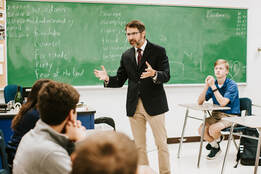 Our teachers also bring many years of experience into the classroom. Sixty-two percent of Borgia’s teachers have more than 10 years of experience. Sixty-one percent of Borgia’s teachers have an advanced degree. All students pair with a team of educators consisting of a guidance counselor, advisor, and homeroom teacher who support our students throughout their Borgia experience and prepare them for life beyond St. Francis Borgia Regional High School. The faculty and staff teams work to challenge student academic goals and assist with class schedules, college preparedness, and scholarship opportunities. Statistics from 2019, such as 21 Bright Flight scholars, a 100% graduation rate, ACT test scores well above the state and national levels, and $3.97 million in accepted scholarship money, support the success of our model: We know we are doing things right. Borgia enjoys extraordinary loyalty; legacies of three or more generations are not uncommon. We encourage open discussion and collaboration to address the needs of our school community. Our ultimate goal is to promote total human development as Christians. We value a learning atmosphere that invites enthusiasm and self-discipline on the part of each student and teacher, creating supportive relationships that challenge and motivate.
The School District of Washington is geographically one of the largest school districts in Missouri. We serve approximately 4,000 students from Franklin County, Warren County and St. Charles County. We believe the authentic learning and personal growth of our students and staff will ensure our collective success.  Focus Areas The School District of Washington’s Strategic Plan for 2019-24 has developed five focus areas; Student Achievement and Engagement – We want to provide our students with relevant learning experiences to match pour rigorous curriculum; equipping students with the skills they need to succeed in school, face future challenges and thrive well beyond graduation. Safety, Health, and Well-Being of Students and Staff – We desire secure yet inviting school environments and believe in the whole-child approach to improve education. We want to take proactive measures to support students as they develop character, gain social and emotional maturity, achieve better health, grow in confidence, and acquire the citizenship skills needed to become members of society. Meaningful Partnerships – We recognize the strength of our district/schools directly correlates to our timely, relevant, and ongoing engagement with families, businesses, higher education, and broader community. Facilities and learning Environments – We desire up-to-date facilities and learning environments that support the learning needs of students, instructional delivery mechanisms of our teachers, while meeting the efficiency expectations of our stakeholders. Assets and Sustainability – We know the success of our school district begins with how we value, hire, support and retain high-quality staff; providing them with effective resources to meet the needs of our students while maintaining fiscal responsibility and accountability. Health Science Academy The School District of Washington, in partnership with Mercy, introduced a new program for students for the 2018-19 school year. Health Sciences Academy of Innovation is a unique learning opportunity housed within Mercy Hospital and the Four Rivers Career Center. Health Occupations students from the Four Rivers Career Center will be at Mercy learning through the lens of health sciences in specially designed state of the art classroom facilities. This unique learning environment includes hands-on application and exposure to the many pathways of study and careers in the field of health sciences. Other courses offered as part of the new program are Medical Intervention and Biomedical Innovation, which will be held at the Four Rivers Career Center. Those students may spend part of their class time at Mercy. 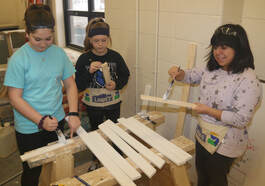 BUILD Academy The School District of Washington's BUILD Academy (Building Unique and Innovative Learning by Design) is held at Four Rivers Career Center. BUILD Academy offers an authentic project based learning experience to over 100 sixth-grade students from Washington West Elementary and Campbellton Elementary. This project based learning model exposes students to possible careers that they may not even knew exist before they enter the BUILD Academy. The end project is a dog house. However, the true learning occurs when these students use every day standards by means of developing a business plan, designing business logos, drafting the dog house design from scratch and applying math and measuring skills to the actual building of the doghouse. "I am excited to be a part of the roll out of BUILD Academy. I was confident that the Project Based Learning method combined with the uniqueness of the program would be second to none. However, I underestimated how much excitement, pride and passion it would ignite in our sixth graders," said Annie Wieland, FRCC College and Career Specialist. "I was pleasantly surprised at the level of leadership and patience our high school Building Trades students displayed. Additionally, our sixth-grade and building trades instructors took an idea and brought it to life through collaboration and a lot of extra time, all the while, making it look easy. BUILD Academy has been a win-win for all involved." 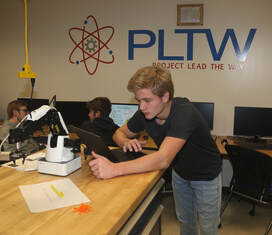 Project Lead The Way Project Lead The Way provides transformative learning experiences for students and teachers by creating an engaging, hands-on classroom environment that empowers students to develop in-demand knowledge and skills they need to thrive. Engineering, Biomedical Science and Computer Integrated Manufacturing are offered in the PLTW program for the high school level. At the middle school level, offered are Medical Detectives (students play the role of real-life medical detectives as they collect and analyze medical data to diagnose disease) along with Design and Modeling (students discover the design process and develop an understanding of the influence of creativity and innovation). PLTW Engineering is a hands-on pathway for students who enjoy math and science classes. There currently are four engineering classes offered through Washington High School and Four Rivers Career Center. Introduction to Engineering Design (IED) and Principals of Engineering (POE) are offered at the high school. Students develop a solid foundation of skills to help them problem solve and use some of the software used by engineers in the design process. Computer Integrated Manufacturing (CIM) is the first class offered in the fall at FRCC. Engineering Design and Development (EDD) is offered at FRCC in the spring semester. PLTW Biomedical is a program with four different courses, all relating to different aspects of health science. The first two courses, Principles of Biomedical Science (PBS) and Human Body Systems (HBS), are offered at Washington High School. Medical Interventions and Biomedical Innovations are the final two courses in the PLTW Biomedical program. They are offered at Four Rivers Career Center. Washington High School is offering a new course for the 2019-20 school year in computer science. The course is titled Project Lead the Way CSE, which stands for Computer Science Essentials. The course is a great entry point for students who think they are interested in computer science and acts as a support to those who already have experience in this field. In this course, students explore many different topics in computer science and gain experience through activities, research and projects. Topics covered in this class include mobile app development, robotics, Artificial Intelligence (AI), and text-based programming. Students also research different professions in the computer science field, helping them gain knowledge of different career opportunities. PLTW Computer Science Essentials starts off with block-based programming. This benefits students who have never had experience with programming and are just getting used to the formatting and logic. The software we use in PLTW CSE include MIT App Inventor, VEX Robotics, and Amazon Web Services. MIT App Inventor is a block-based programming software that allows students to click and drag different pieces of code together to make a working mobile application. These applications that students develop are tested and deployed on an Android tablet. VEX Robotics is also a block-based program, but can double as text-based programming. In this unit, students program self-driving vehicles to navigate a map. Students also get experience with vision sensors. Vision sensors can view and recognize different colors and react differently according to the color. As the course develops and the students gain experience with the logic behind programming and eventually work on text-based programming. Text-based programming in Computer Science Essentials is done on Amazon Web Services – a cloud service. During this unit, students get experience with the syntax of programming and develop a more custom product. Students seem to really enjoy this class. It is unlike other courses because it is 100 percent project based and students get to develop things that they are interested in. The course is set up to have specific activities and directions for students to work through first, and then leave the projects open for creativity. 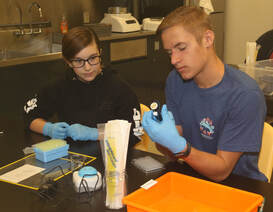 Washington High School AP Classes Washington High School offers a comprehensive list of AP courses for students. In the past 10 years we have grown our AP course offerings from two to 12 courses. AP courses provide students the opportunity to participate in a nationally recognized program and earn college credit. How much credit a student earns depends on the college they will attend, the major they select, and how well they scored on the National AP exam. Washington High School has been recognized as an AP Honor Roll school. An AP Honor Roll designation means we have increased our offerings and kept a high achievement level. These courses are among the most rigorous offered at WHS. AP classes offered at WHS are AP Calculus, AP Statistics, AP Computer Programming, AP Computer Science Principles, AP Literature and Composition, AP Language and Composition, AP Seminar, AP Art Studio, AP US History, AP Government, AP Biology, AP Chemistry, AP Physics and AP Research. Looking Ahead
Major planning is under way for new construction of South Point Elementary School and an inaugural Parent Summit. New Elementary Construction: The two-story, approximately 78,000-square-foot school will serve kindergarten through sixth grade. It will be built on a 75-acre parcel owned by the School District of Washington on Highway 100 east near St. John Road. It will be constructed at the northwest corner of Old Highway 100 and St. Johns Road. The new school is slated to open in August 2021. Parent Summit: The School District of Washington is hosting its inaugural Parent Summit, scheduled for November 17, 2020, at Washington High School. This is an opportunity for parents, guardians, caregivers and grandparents to learn more about important topics related to your child’s education in a conference style format. The Summit is an opportunity for parents to learn directly from educators, business leaders and community members about important topics that impact your child’s education and social/emotional health. As we move into the new decade, it’s hard not to think back on how Washington has changed over the past 10 years. As many communities had to, Washington realized the need to adapt to the new economy after the Great Recession. It became clear that residential development was not going to continue the same as before, industrial projects were going to become more competitive, and it became more apparent to focus on our downtown as a catalyst to overall community success. City leaders understood that Washington needed to evolve with the changing landscape and, fortunately, some measurements from 2019 show that has paid off. In 2019, Washington had a building permit valuation of almost $45 million, a 28% increase of the year prior. A statistic that had continued to increase over the past 4 years as well. We landed Franklin County’s largest industrial project since the power plant with the construction of Melton Machine and Control’s new facility. The 330,000 square foot facility will double their square footage and be home to over 220 jobs. Clemco and Hodges Badge both moved their global headquarters from the west and east coasts, respectively, bringing approximately 100 new jobs with them. In 2019, we also saw residential permits at levels we haven’t seen since well before the recession. There were 115 new residential dwelling units built in 2019, breaking 100 new homes in a single year for the first time since 2006. Looking back at the past decade, we can attribute these numbers to some of the changes the City has made. Identifying assets to capitalize on and challenges to overcome were crucial to finding our recent success. A Call to Action While Washington has become an excellent place to take a weekend trip, it has always been home to a regional workforce. Since its incorporation, Washington has always been a strong manufacturing town. First as a shoe factory town and then in the late 60’s diversifying itself with a number of different industries. For over 100 years, the commercial and residential growth would follow the new industry and, although commercial development moved out to the highway and new subdivisions followed suit, downtown always remained as the core of the community. From 2000 – 2010 the City helped facilitate the development of a new industrial park and saw continued business expansion and job growth, even through the brunt of the recession. Retail development followed this trend through the same time period with the completion of a major shopping center and expansions to the highway system. The resiliency of the commercial and industrial economy in Washington remained apparent through the recession. City Staff realized, however, after reviewing the 2010 census data that residential growth did not mirror the commercial and industrial growth. Washington’s population had increased by .08%. A workforce study was completed and showed that 79% of the City’s workers lived outside the City limits solidifying Washington as a magnet for industry but not as a destination for families. Given the amenities downtown and throughout the City, it was logical to derive from the study that the potential for residential growth existed but the main deterrent was the cost of land in Washington. City Planning staff along with the Community and Economic Development Department recognized the issue and proposed a number of policy updates to facilitate more affordable residential growth. A new comprehensive plan was written with hundreds of comments and input from the community. It was determined that a main goal was to diversify housing options in Washington and facilitate more opportunities for renters and first time home buyers. This resulted in three major development code changes and an overhaul of the City’s zoning code. The first proposal was meant to tackle land cost. The cost per acre in Washington in some cases was twice as much as the cost in two neighboring communities. At the time, the City required all new subdivision lots created to be at least 10,000 square feet in size. The City created two new zoning districts to increase the housing density. One allowed lot sized down to 7,500 square feet. The other allowed 6,000 square foot lots. Washington saw an increase in subdivision development almost immediately. The second proposal included an attempt to lower development cost that in turn was passed on to the homebuyers. In one instance, this included allowing for narrowed street widths on certain streets that would not have through traffic on them. It also allowed for narrower streets and right-of-way when restricting parking on one side of the street. The third development policy proposal included increasing the density allowance for multi-family development. It became clear that the outdated code from the early 80’s discouraged developers from investing in multi-family development. The City increased the density maximum by 33% to help meet the goal set forth in the comprehensive plan. Within one month the City saw 160 units requested over three sites. Lastly, Washington made the decision to completely overhaul the zoning code. Major updates had not been done since 1980’s and the City saw this as an opportunity to modernize the code. The new code section updated zoning definitions and created policies for more modern uses, such as microbreweries and distilleries. The new code made it easier to develop mixed uses in the downtown district and created an opportunity for more planned developments. 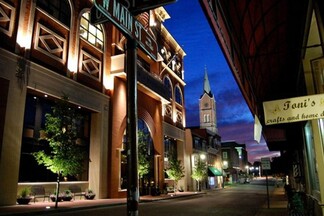 Continued Revitalization Downtown Washington saw an opportunity to facilitate growth throughout the community and provide housing options with the code changes allowing for new development all over town. All the while, attention was never shifted away from Downtown, as the City recognized it as its best asset. Today, someone returning a visit to downtown Washington for the first time since 2007 might find portions of it unrecognizable. Over the past 12 years, Washington has focused on underutilized areas of the downtown and seen great success. The City utilized Tax Increment Financing (TIF) Districts to not only identify blighted and underutilized land downtown but to facilitate a swift redevelopment. It began in 2007 with the Bank of Washington choosing to invest in downtown by rebuilding their $7 million headquarters on Main Street. Their commitment to the district allowed the creation of a conservation district that covered most of downtown and gave the City a tool to invest in much needed improvements. This allowed for the completion of large projects that clean up the district and encourage continued investment. These projects include burying all overhead utility lines, streetscape enhancements, public parking, and other aesthetic enhancing projects. As a result, over the past 12 years, Downtown Washington has seen over $30 Million of private investment in three active TIF Districts that include 40 new residential units, 4 new bars and restaurants, and 20,000 sq. ft. newly constructed retail space. All of which was constructed on underutilized or vacant lots downtown and has encouraged redevelopment of existing historic structures. With the success of major redevelopment projects, the City and Downtown Washington, Inc. also realized an opportunity to assist property owners on smaller projects. The active TIF districts proved a success for downtown as a whole, but Washington wanted to expand that opportunity to property owners in the district that weren’t part of the major redevelopment. The City introduced The Small TIF Program. This program allowed owners of existing structures in a TIF district to recoup some of the property taxes captured from the increased development. If an owner of an existing structure agreed to add upstairs commercial or residential space, make façade improvements, or redevelopment with environmentally friendly materials they became eligible for a rebate of 80% of the increase in property taxes. The rebate is taken out of the sales tax generated TIF District Fund and given back to participating property owners in the district. The City wanted to recognize the commitment and investment of existing downtown owners and the Small TIF program proved a good way to do so. On top of the Small TIF Program, Downtown Washington, Inc. also created a low interest loan program for owners of existing buildings in the district. These funds were made available through a Neighborhood Assistance Program Grant from the Missouri Department of Economic Development and allows downtown property owners to apply for up to a $100,000 loan offered at a 1% interest rate. As the loans are paid back, Downtown Inc. can loan the money out again to additional property owners in the area. Owners were able to participate in both programs and helped make what felt like long term dreams a reality. Being able to offer large and small scale incentives for developers and property owners increased investment in the district and solidified Downtown Washington as a destination. When marketing Washington as a place for young families to land, Downtown became the City’s most effective recruitment tool. 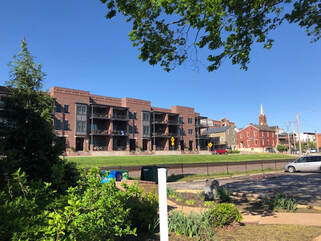 Moving Forward The progressive actions of the City and Downtown Washington, Inc. since 2007 are what drove the recent increase in investment and residential development. And in true Washington fashion, a new group of young citizens have been encouraged by the development and taken on a call to action of their own heading in to the new decade. A group called the Washington Young Ambassadors has formed and aims at continuing the progress by attracting more like minded young professionals and the employers they work for. The group actively organizes networking events, pub crawls and happy hours, and speaking events to engage the young professionals of Washington. In 2019, with the support of the local banks, they contracted with a video production company to create a video series on Washington. The five-part series will display Washington as a great place to live, work, and play and as a destination for young professionals to build a career and family life. A website, www.washmoworks.com, has also been created to highlight job opportunities in the area. Now, anyone looking for a new job or graduating from schooling can visit the site and search by job description or major to find the right position for them in Washington. The group also works with regional high schools, community colleges, and universities on reaching out to alumni lists to highlight all the opportunities Washington has to offer. Adopting the slogan, “Washington, MO… Plan on Staying”, the Washington Young Ambassadors are giving people all the tools they need to do just that, plan on staying in Washington. For more information...
Darren Lamb, City Administrator Sal Maniaci, Community & Economic Development Director City Hall: 405 Jefferson Street Washington, MO 63090 (636) 239-1000 City website: www.washmo.gov Community Website: www.washmo.org |
More from the Blog...
All
Archives
April 2024
|
-
323 W Main Street
Washington, MO 63090 -
(636) 239-2715
-
[email protected]


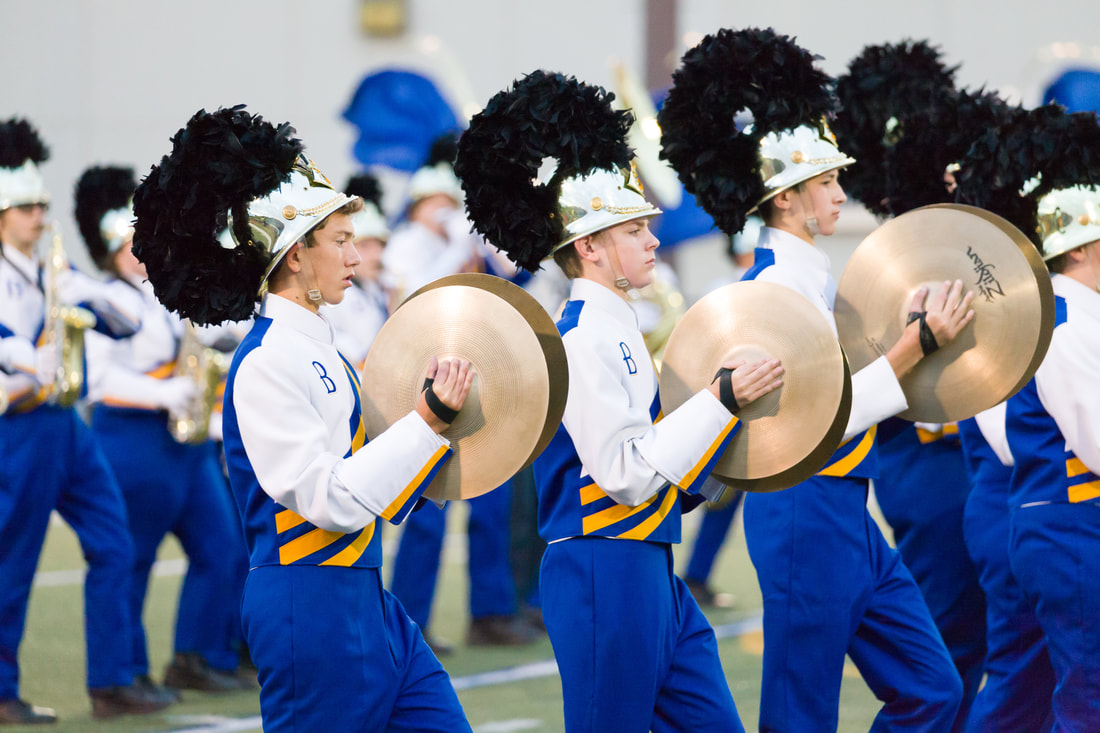



 RSS Feed
RSS Feed